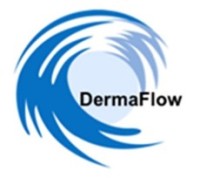
© CEOCFO Magazine -
CEOCFO Magazine, PO Box 340
Palm Harbor, FL 34682-
Phone: 727-
Email: info@ceocfocontact.com


Search





Business Services | Solutions
Medical | Biotech
Cannabis | Hemp
Banking | FinTech | Capital
Government Services
Public Companies
Industrial | Resources
Clean Tech
Global | Canadian
Lynn Fosse, Senior Editor
Steve Alexander, Associate Editor
Bud Wayne, Marketing
& Production Manager
Christy Rivers -







PAD the Silent Killer and How DermaVasc™ Makes a Difference
 Dr. Irene Jaffe
Dr. Irene Jaffe
Chief Executive Officer
Dermaflow, LLC
Contact:
Dr. Irene Jaffe, CEO DermaFlow
856-
Interview conducted by:
Bud Wayne, Editorial Executive
CEOCFO Magazine
Published – October 1, 2021
CEOCFO: Dr. Jaffe, you were appointed CEO of Dermaflow, LLC in November 2010. How has the company and its vision developed under your leadership? Has there been any changes to your approach or in product development?
Dr. Jaffe: I was one of three founders of Dermaflow. We had known each other before from various entrepreneurial efforts and we all both trusted and respected each other. We all had different complementary skill sets. These encompassed areas of engineering and technology development, business acumen, business strategy, R&D, and technology management. The latter is more descriptive of myself. Dermaflow has what is known as a platform technology, which means that we have developed tools that can address many applications.
The challenge was and is selecting the application or applications that would be an ideal pick based on timeliness, existing need and gaps in the market and market readiness to adopt. This is the vision that I have evolved together with my team to where we are today. We have made some false starts but luckily before we went too far out on a limb with that, we recognized and acknowledged that, also seeing that some of the applications that we thought to target early on had a lot of value but they did not meet a strict enough litmus test. We learned over time to be more rigid with the criteria we posed in order to have the best market fit. The keyword is market fit. We cannot emphasize enough how important that is. In a way, we have come full-
CEOCFO: Before we talk about your product offering, would you tell us about the market and need for non-
Dr. Jaffe: Peripheral blood flow is known by numerous other names as well. One of the names is dermal blood flow and that is where the name of the company Dermaflow comes from. Another one is skin blood flow, another is capillary blood flow and the last one is microcirculation. They all are words that describe the same thing. We are talking about blood flow in your smallest blood vessels, your capillaries, which are located directly below your skin, only about one to three millimeters, so very close to your epidermis. This actually allows a window into measuring changes in the capillary blood flow using appropriate sensors on the skin and is totally non-
The periphery of your body and the blood flow there is the first area where changes in blood flow occur when a deterioration sets in, whether it pertains to an acute condition or a chronic condition. Therefore, being able to measure these changes in a simple and cost-
In the specific market we are addressing today, the peripheral vascular market, we look for early signs of deterioration in the blood flow in the lower limbs, which can lead to PAD (Peripheral Arterial Disease). About 50% of PAD subjects are asymptomatic, meaning they have no symptoms and there is a huge number of people that are not aware that their peripheral vascular condition is deteriorating. This is not being routinely screened nor monitored today and it needs to be. All of this is part of the Dermaflow and DermaVasc™ mission.
CEOCFO: Would you tell us about your non-
Dr. Jaffe: PAD is a silent killer of which many people that have the early manifestations of this disease are not aware at all. If PAD continues silently until the disease is full-
Furthermore, so many prevalent chronic conditions which exist today, like high blood pressure, diabetes, obesity, high cholesterol, smoking, advanced age and inactivity all can lead to PAD. This probably encompasses ~70% of the adult US population today. Just as blood-
Based on the development of our proprietary PERICHEK™ sensor technology, which can measure local peripheral blood flow throughout the body including in the lower limbs, we realized that we can enhance this by adding a second technology that works together with PERICHEK™ to stimulate the blood flow in the leg artificially. By stimulating the blood flow, we are essentially teasing out changes in flow that may not be seen otherwise. Thus, allowing us to be even more accurate in looking at changes in the peripheral blood flow which can then be related to the beginning of PAD disease, as PAD is typically a disease of the insufficiency of circulation in your lower limbs.
CEOCFO: Is there an age that this is more prevalent?
Dr. Jaffe: Yes there is. The probability of having PAD as you age increases sharply.
There are a number of chronic conditions referred to earlier, however, that can lead to PAD at earlier ages.
Who has these chronic conditions? If you look broadly, it is about 70% of the adult population today in the US and elsewhere as well. That is a huge percentage of the population.
CEOCFO: Why non-
Dr. Jaffe: Non-
CEOCFO: How does your product differ from what is in use today?
Dr. Jaffe: Lower limb circulation issues are measured in the clinic today by a variety of different devices and technology, foremost of which is known as ABI (Ankle-
As we see it the bigger issue is early detection both in the home and in primary care physician offices. We regularly attend and sit on patient panels. Currently many of them are virtual. We talk to patients throughout the world but mostly in the US and Europe. We hear from the PAD patients and we hear their stories. They relate to us that had they had such a tool as DermaVasc™, long before they were actually diagnosed with PAD, a tool that would have indicated and alerted them in a much earlier time-
This is the space where DermaVasc™ differs. It will address home monitoring for all those that are high-
CEOCFO: Is there a difference in your products depending on the settings, whether it be hospitals in-
Dr. Jaffe: We are placing a lot of initial emphasis on home products, for reasons that I have already mentioned. We are adamant to catch early disease state before anyone has to go to a hospital clinic. What we believe is also an advantage, is that the technological concept behind all of our products whether at home or in the clinic is really the same. The difference is maybe as far as a few features or the way the software will portray results, whether at home or in the clinic.
Obviously at home, you want to make it easier for the nonprofessional. In the clinic, you are dealing with physicians so you can make it a bit more technical. These product differences whether for home or clinic will follow over to cost for the different settings, so clearly the most inexpensive products will be for the home and we are working hard to make those products that can also be bought out-
CEOCFO: Is the in-
Dr. Jaffe: We are taking that into consideration, so the way we envisioned our at-
For those who wish to see a more sophisticated portrayal or result, there will be Bluetooth connection to smart devices such as your phone, cell phone, or tablet and you will be able to see it that way. Eventually with the clinical products, there will be a way to transfer that data via the cloud where at least your primary care physician can take a look at your measurements as well. Initially as to your point, ease-
CEOCFO: Where are you in the process; still in development or with products on the market?
Dr. Jaffe: We are not on the market. We do have advanced prototypes and we also are currently in discussions with three different partners regarding final development manufacturing and commercialization. We are hoping initially to be in the OTC market and eventually in the clinic as well.
CEOCFO: Are you fully funded for your growth in product development and commercialization or looking for investors and partners?
Dr. Jaffe: Dermaflow is considered an early-
CEOCFO: Why is the success of Dermaflow important to patient health and an important company to watch?
Dr. Jaffe: Dermaflow was founded in order to utilize measurements of peripheral blood flow and early detection for a broad platform of chronic and acute diseases and conditions. Early detection may allow for disease prevention or at the very least for not allowing further deterioration, which could greatly impact quality of life and even lead in some cases to early death.
COVID had been instrumental in showing how important home health monitoring is. It can be implemented easily and can become part of our daily lives to vastly improve our health. This is what Dermaflow with DermaVasc™ is poised to accomplish with lower limb circulation and vascular health. We together with our vascular exports see clearly the wide breadth of advantages for the consumers, the patients, and the health system as a whole.
Dermaflow, LLC | Dr. Irene Jaffe | Skin Blood Flow Measurement | How To Detect Peripheral Artery Disease | PAD the Silent Killer and How DermaVasc™ Makes a Difference | CEO Interviews 2021 | Medical Companies | dermal blood flow measurement, how do they diagnose peripheral artery disease, how do they test for peripheral artery disease, body sensors, RPM (remote patient monitoring), health wearables, PAD (peripheral arterial disease), diabetes, chronic wounds, chronic disease, Cardiovascular Disease, Dermaflow, LLC Press Releases, News, Twitter, Facebook, Linkedin
“In the specific market we are addressing today, the peripheral vascular market, we look for early signs of deterioration in the blood flow in the lower limbs, which can lead to PAD (Peripheral Arterial Disease). About 50% of PAD subjects are asymptomatic, meaning they have no symptoms and there is a huge number of people that are not aware that their peripheral vascular condition is deteriorating. This is not being routinely screened nor monitored today and it needs to be. All of this is part of the Dermaflow and DermaVasc™ mission.”
Dr. Irene Jaffe